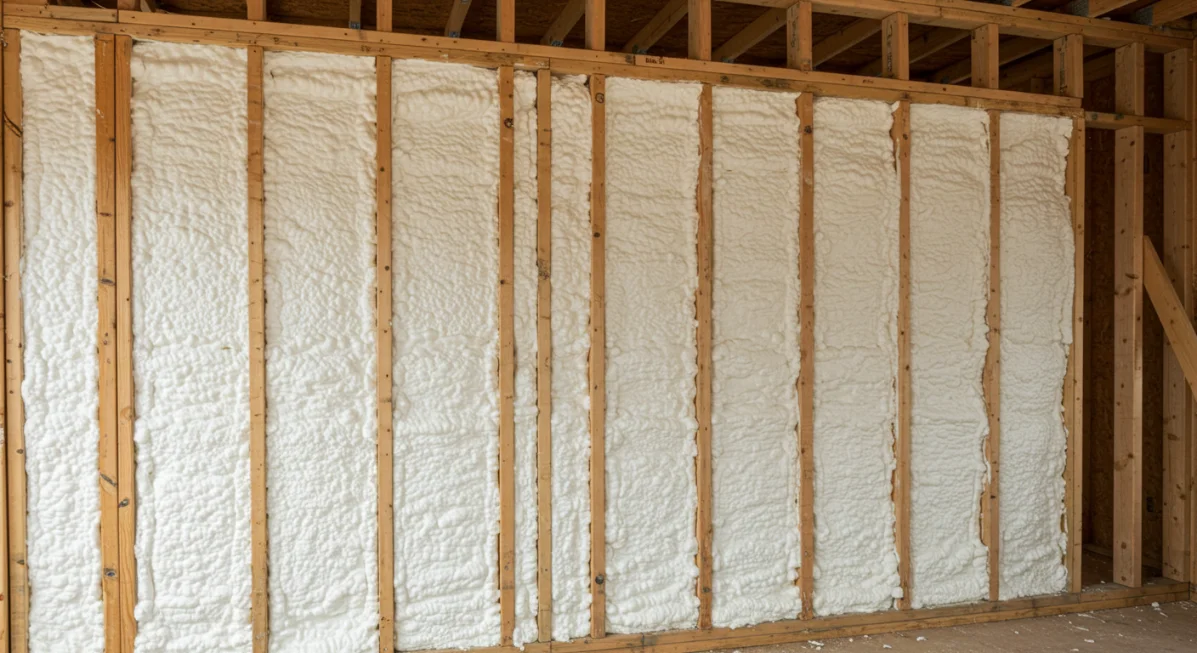
In Seattle, the best season to install spray foam insulation is late spring through early fall. During this window, temperatures typically range from 60°F to 80°F, aligning with optimal curing conditions for both open-cell and closed-cell foam products. These moderate, consistent temperatures reduce the risk of condensation during application and allow the foam to expand and bond correctly.
Winter installations are possible, but they require more advanced techniques, such as substrate preheating and controlled ambient temperatures. These add time and cost to the process and may limit accessibility in certain building areas, especially when working on projects like residential insulation, where consistent indoor conditions are crucial for optimal results.
This article explains seasonal factors in depth, offers practical insight from field experience, and presents technical data and comparisons to help contractors, builders, and property owners make informed decisions.
Cascadia Spray Foam of Seattle has deep experience working in the Puget Sound region’s damp and variable conditions, ensuring material performance and installation reliability across all seasons. Cascadia Spray Foam of Seattle also recently shared a regional update announcing its expanded spray foam services coverage, detailed in a brief press release.
| Season | Temperature Range (Avg) | Humidity Levels | Installation Difficulty | Typical Costs | Pros | Cons |
|---|---|---|---|---|---|---|
| Spring (Apr-Jun) | 55°F – 75°F | Moderate | Low | Moderate | Ideal curing temps; stable weather | Pollen may impact ventilation |
| Summer (Jul-Sep) | 65°F – 85°F | Low | Low | Moderate | Fast curing; minimal condensation | Higher attic temps may need venting |
| Fall (Oct-Nov) | 50°F – 65°F | High | Medium | Slightly Higher | Good wall work conditions | Moisture control becomes critical |
| Winter (Dec-Mar) | 35°F – 50°F | High | High | Higher | Indoor areas still feasible | Heaters or substrate preheating needed |
| Parameter | Ideal Range | Impact of Deviations |
|---|---|---|
| Substrate Temperature | 60°F – 80°F | Below 50°F: foam shrinkage, poor adhesion |
| Ambient Humidity | < 60% RH | > 70%: risk of foam blistering or voids |
| Foam Expansion Time (avg) | 4 – 8 seconds | Delayed in colder weather |
| Cure Time (initial set) | 1 – 5 minutes | Doubled or tripled in cold or damp air |
| Chemical Mixing Consistency | Stable temperature | Affected by temp swings or high moisture |
Bonus Tip: Use a digital infrared thermometer to confirm substrate temperature before application in transitional seasons like spring and fall.

What happens if spray foam is applied during heavy rain or high humidity?
Installation must pause until the substrate is dry. High humidity can prevent foam adhesion and cause off-ratio expansion.
Is cold-weather foam available?
Yes, certain closed-cell products are engineered for low-temperature application, but require specific handling and site preparation.
How far in advance should I schedule insulation work?
Lead times vary by season. For spring or summer, book 4-6 weeks ahead to ensure availability.
For seasonal insulation planning or year-round solutions, Cascadia Spray Foam of Seattle provides technical expertise across all spray foam applications. Reach out to discuss your building’s insulation readiness and get reliable, climate-specific advice.
Phone: (425) 386-3500 Email: [email protected]
Yes, but it requires controlled indoor conditions, such as substrate heating and ventilation control, to ensure foam performance.
Moisture levels are high, so closed-cell foam is recommended for most exterior-facing surfaces due to its vapor resistance.
Drafty rooms, fluctuating indoor temperatures, and high energy bills usually indicate inadequate or aging insulation.
Yes. Properly installed spray foam reduces heat loss in winter and prevents heat gain in summer, stabilizing indoor temperatures year-round.
Properly installed spray foam can last 20-30 years without significant degradation or settling.